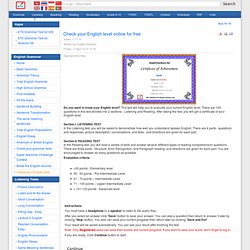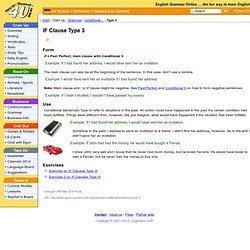

Dictionary, Thesaurus, and Translations. The main source of TheFreeDictionary's general English dictionary is Houghton Mifflin's premier dictionary, the American Heritage® Dictionary of the English Language, Fifth Edition.

This authoritative work is the largest of the American Heritage® dictionaries and contains over 200,000 boldface terms and more than 33,000 written examples. The Fifth Edition also incorporates more than 10,000 new words. Containing 260,000 entries, the general dictionary is augmented with Collins English Dictionary – Complete and Unabridged, and is enhanced by 30,000 illustrations, an audio pronunciation feature, etymologies, abbreviations, biographical entries, and more. Definitions are accompanied by usage examples from classic works of literature, courtesy of The Free Library. Gramatica Inglés,Ejercicios Gramaticales del idioma inglés. Some, Any or No? - Online Language Quiz. Adverbs of Manner 2. Adverbs and adjectives. Adverbs exercises.
Quantifiers Exercises,English Grammar Test,a few,a little,some,any,many,much FCE exercise tests. Try the exercise #1 – IntermediateTry the exercise #2 – Upper Intermediate Usage of quantifiers: A few and few, a little and littleGraded QuantifiersSome or Any?

Something, Anything, Someone, Anyone etc.Enough A few and few, a little and little These expressions show the speaker’s attitude towards the quantity he/she is referring to. A few (for countable nouns) and a little (for uncountable nouns) describe the quantity in a positive way: “I’ve got a few friends” (= maybe not many, but enough)“I’ve got a little money” (= I’ve got enough to live on) Few and little describe the quantity in a negative way: Few people visited him in hospital (= he had almost no visitors)He had little money (= almost no money) They are like comparatives and hold a relative position on a scale of increase or decrease. Examples: Quantifiers with countable and uncountable nouns Note: much and many are used in negative and question forms. Example: How much money have you got? They are also used with too, (not) so, and (not) as. ESL/EFL Cool Resources.
Teaching. Www.bilderbergmeetings.org/conferences-10s.html. Check your English level online for free. Do you want to know your English level?

This test will help you to evaluate your current English level. There are 120 questions in this test divided into 2 sections - Listening and Reading. After taking the test, you will get a certificate of your English level. Section I. LISTENING TESTIn the Listening test, you will be asked to demonstrate how well you understand spoken English. Section II. Quantifiers Gap Fill Exercise. Quantifiers: A Basic Quiz. English Listening Comprehension Quizzes and Tests for ESL EFL. SUBJECT AND OBJECT PERSONAL PRONOUNS AND POSSESSIVES. IF Clause Type 3. Form if + Past Perfect, main clause with Conditional II Example: If I had found her address, I would have sent her an invitation.

The main clause can also be at the beginning of the sentence. In this case, don't use a comma. Example: I would have sent her an invitation if I had found her address. Note: Main clause and / or if clause might be negative. Example: If I hadn’t studied, I wouldn’t have passed my exams. Use Conditional Sentences Type III refer to situations in the past. Sometime in the past, I wanted to send an invitation to a friend. Example: If John had had the money, he would have bought a Ferrari. I knew John very well and I know that he never had much money, but he loved Ferraris.
Exercises. Splendid Speaking Podcasts. Task-Based Learning. Advanced English lessons. Tenses in English. English Courses for Companies.